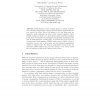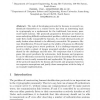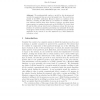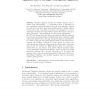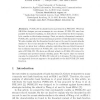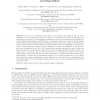115
Voted
CTRSA
2007
Springer
15 years 2 months ago
2007
Springer
Abstract. Multi-signatures allow multiple signers to jointly authenticate a message using a single compact signature. Many applications however require the public keys of the signe...
112
click to vote
CTRSA
2007
Springer
15 years 2 months ago
2007
Springer
Abstract. Known compact e-cash schemes are constructed from signature schemes with efficient protocols and verifiable random functions. In this paper, we introduce a different ap...
117
Voted
CTRSA
2007
Springer
15 years 4 months ago
2007
Springer
Privacy concerns in many aspects of electronic communication trigger the need to re-examine
91
Voted
CTRSA
2007
Springer
15 years 4 months ago
2007
Springer
Abstract. The task of developing protocols for humans to securely authenticate themselves to a remote server has been an interesting topic in cryptography as a replacement for the ...
96
Voted
CTRSA
2007
Springer
15 years 4 months ago
2007
Springer
At Financial Crypto 2006, Golle presented a novel framework for the privacy preserving computation of a stable matching (stable marriage). We show that the communication complexity...
CTRSA
2007
Springer
15 years 4 months ago
2007
Springer
Side-channel attacks on block ciphers and public key algorithms have been discussed extensively. However, there is only sparse literature about side-cannel attacks on stream cipher...
92
Voted
CTRSA
2007
Springer
15 years 6 months ago
2007
Springer
We mathematically explore a model for the shortness and security for passwords that are stored in hashed form. The model is implicitly in the NIST publication [8] and is based on c...
104
click to vote
CTRSA
2007
Springer
15 years 6 months ago
2007
Springer
Standard signature schemes are usually designed only to achieve weak unforgeability – i.e. preventing forgery of signatures on new messages not previously signed. However, most s...
132
click to vote
CTRSA
2007
Springer
15 years 6 months ago
2007
Springer
FORK-256 is a hash function presented at FSE 2006. Whereas SHA-like designs process messages in one stream, FORK-256 uses four parallel streams for hashing. In this article, we pre...
77
Voted
CTRSA
2007
Springer
15 years 6 months ago
2007
Springer
